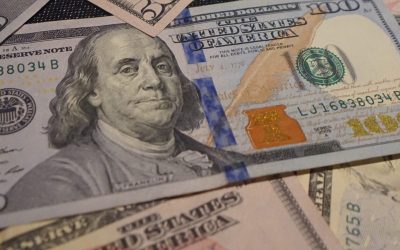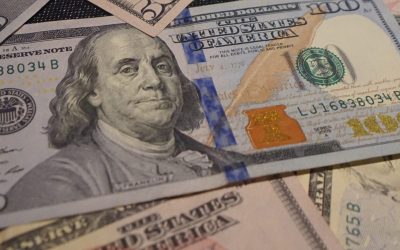Brief #1—Agriculture
By Katherine Cart
Farmland is lucrative. Acreage denotes wealth and provides multi-generational investment returns. Racial inequity and farm policy, in this country, have long been indivisible; discrimination in agrarian land ownership and by the USDA has made a farce of an already flimsy bid for equality, for financial freedom and freedom to farm and ranch American land with the nonpartisan support of government. The Covid-19 pandemic has both exacerbated and highlighted the racism within the USDA’s treatment of farmers. Two bills, the Emergency Relief for Farmers of Color Act and the Justice for Black Farmers Act seek to begin the remediation of racial disparity in US agriculture.
Economic Policy
The Minimum Wage of $7.25 Has Not Been Raised Since 2009
Brief #110—Economics
By Rosalind Gottfried
The debate regarding the efficacy of a $15 minimum wage is heating up since Biden included it in his Corona virus stimulus package. The bill would have a gradual phasing in of the wage over the next four years. Currently, it would be $9.50 and go to $11, then $12.50, then $14 annually until it reaches $15 in 2025. Future increases would be tied the median wage rate, thereby assuring the consistent value of the minimum wage.
The consequences of the increase are debated and the research demonstrates some mixed outcomes but overwhelmingly it supports the increase. Most show it does not actually decrease jobs. One study shows no impact on jobs in 138 state and local areas, over five years and another shows no impact in thirty years. One analysis of 60 studies of wages and jobs shows no net loss of jobs. Increased wages actually are more likely to increase jobs due to the enhanced purchasing power of the lowest income groups. More money would be spent in local businesses and services, increasing revenue and creating jobs.
New Efforts Seek to Reduce Growing Rates of Child Poverty
Brief #109—Economics
By Rosalind Gottfried
President Biden seeks to raise the child tax credit to $3600 for children under 6 and to$3000 for school age children under 18. This is up from the current level of $2000 per child. As part of the stimulus, this change would become effective in July and last for one year though many Democrats would like to see the change made permanent. The credit would be available to individuals making $75,000 or less and couples making $150,000 or less. It would be based on income data from 2019 or 2020. To increase the effectiveness of the tax break, families could receive monthly payments of between $250 and $350 to meet their routine bills. Researchers at Columbia University estimate that this measure could reduce the child poverty rate by close to 50%. The proposal gained support with the weak jobs report released last week. The cost of the program would increase the federal deficit by 120 billion dollars.
Which Companies are Profiting from the Pandemic?
Brief #108—Economics
By Rosalind Gottfried
With the roll out of COVID 19 vaccinations, and the Biden administration’s pledges to speed their dissemination, it might be imagined that the drug companies are reaping enormous profits. This would be, in large part, an incorrect presumption. Because many of the pharmaceutical companies took money to develop the vaccine, there are limits on how much they can charge for the product. Pfizer, one of the first to bring a successful vaccine to market, did not take government funds for research and development of the vaccine; they did join Operation Warp Speed, at a cost of $1.95 billion to the government to provide the first batch of 100million free to the public. They will charge the government $39.99 per two dose protocol. While the vaccine costs $15 per person to produce, there are also shipping, administration, and distribution costs. They are expected to sell $14bn orth of vaccine in the first year.
Biden’s Economic Executive Orders
Brief #107—Economic Policy
By Rosalind Gottfried
In addition to his $1.9 trillion stimulus plan, now being debated in Congress, President Biden has signed a number of Executive Orders affecting the well-being of struggling Americans.
These included a request that the Department of Education further suspend student loan payments to alleviate the burden on debt carrying graduates. He also requested the suspension of evictions and foreclosures on 44 million rental units across the country.
State and Local Jurisdictions Need Federal Aid to Be Viable
Brief #106—Economics
By Rosalind Gottfried
State and local government budgets provide the bread and butter of fiscal life and, because of the pandemic costs, require a federal infusion of aid to accomplish maintenance of essential services. State and local governments provide major funding for infrastructure, services, and education. They outspend the federal government on goods and services and account for 15% of the GDP. They contribute more than 90% of the moneys for education and 80% of transportation spending. State Medicaid costs have been on the rise, especially in Republican states that did not take advantage of federal extensions of benefits to states. State and local entities employ more people than domestic manufacturing and and have lost 1.3 million jobs since March, representing the smallest workforce since 2001. These are budgetary elements which impact the availability of goods and services which contribute to quality of life, such as police, fire, and waste services.
Biden’s Plan for an Ailing Country
Brief #104—Economic
By Rosalind Gottfried
President elect Joe Biden’s 1.9 trillion dollar stimulus plan provides a comprehensive assault on what ails America and reinstates some of the controversial elements rejected by Republicans in the $900 billion December plan. Most notable is a reinstatement of 350 billion dollars to bolster state and local budgets suffering shortfalls largely attributable to the pandemic crisis. It also includes 400 billion dollars of pandemic aid to vaccinate Americans and open schools. Biden set a goal to vaccinate 100 million Americans in his first 100 days in office.
Income Inequality in California Points to Economic Shifts Nationwide
Brief #103—Economic Policy
By Linda F. Hersey
Whether it is culture, policy or innovation, the nation’s most populous state has long been a frontier for change and a reliable predictor of trends for the rest of the U.S. and around the globe.
Congress Finally Agrees to a Tepid Stimulus and a Federal Budget
Brief #102—Economics
By Rosalind Gottfried
A sustained disparity in the goals of Congressional Democrats and Republicans has ended in a compromise bill which leaves many Americans still vulnerable to the effects of the corona virus economy while providing a stopgap measure to avoid the worst case scenario.
The Crisis In American Higher Education; College Enrollment; Student Debt; Student Loan Forgiveness
Brief #101—Economics
By Rosalind Gottfried
The pandemic has exacerbated troubling trends in higher education. College enrollment fell by 11% from 2011-2019.
Congress at Impasse as Situation Worsens for Millions of Americans
Brief #100—Economic Policy
By Rosalind Gottfried
As winter recess approaches the Congress remains at an impasse regarding a new stimulus package which is likely to fall by the wayside as it turns its attention to passing legislation to avert a December 11th federal shutdown.
Explaining the Minimum Wage
Brief #99—Economics
By Rosalind Gottfried
The term minimum wage actually refers to several different things. There is the federal minimum wage which is the lowest wage that employers can pay their workers unless they are in an exempt category of tipped workers.










